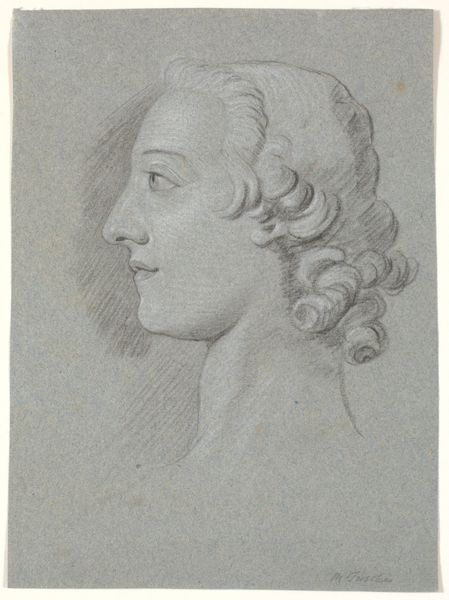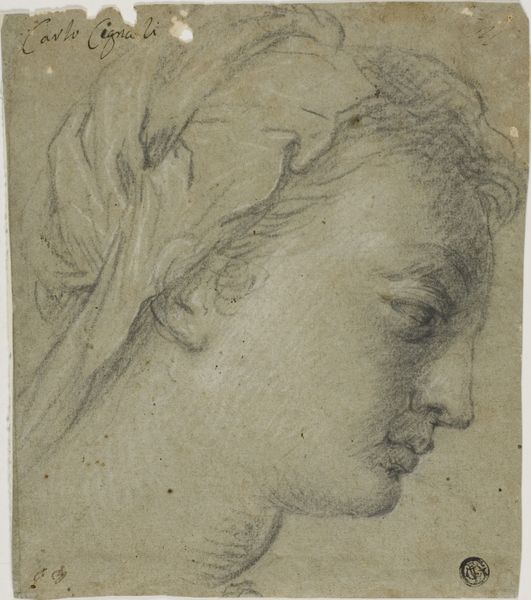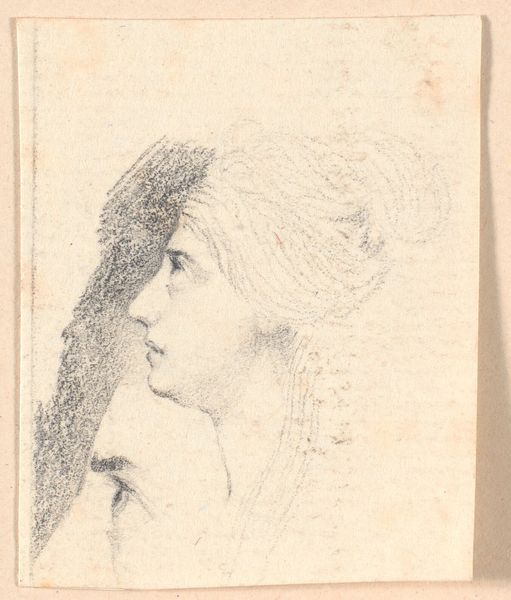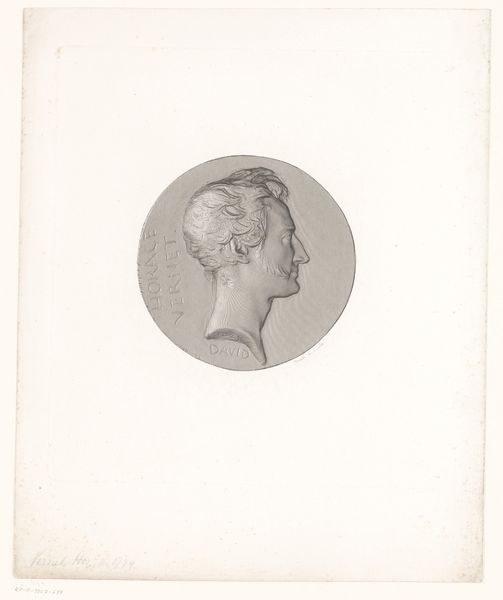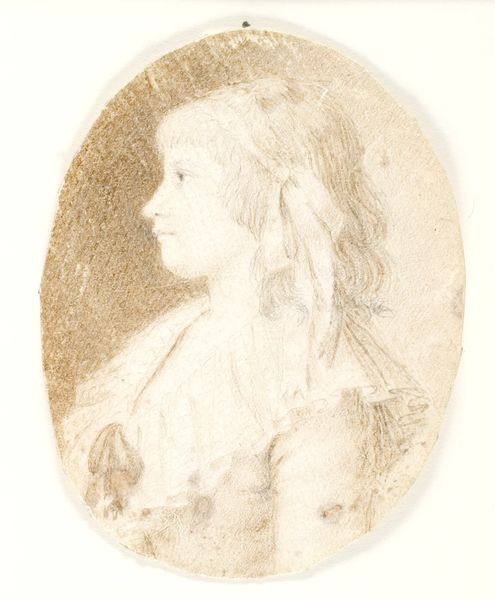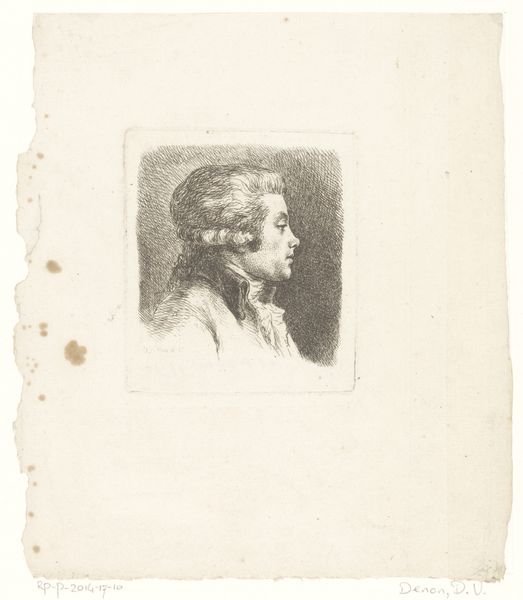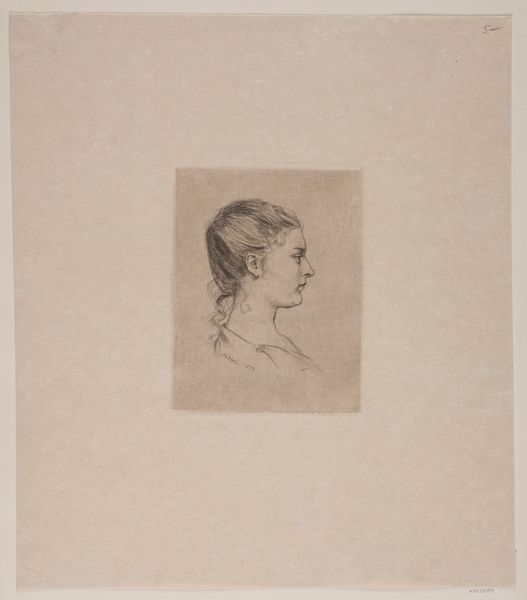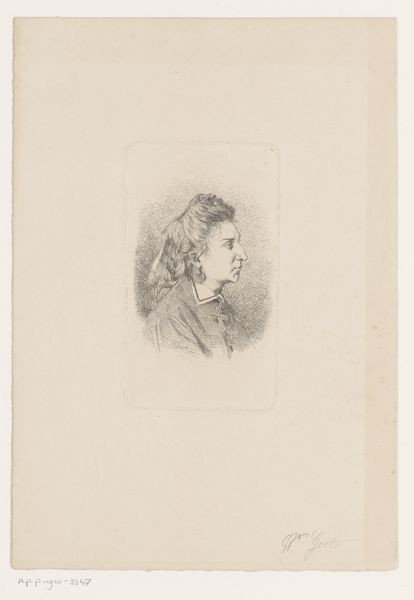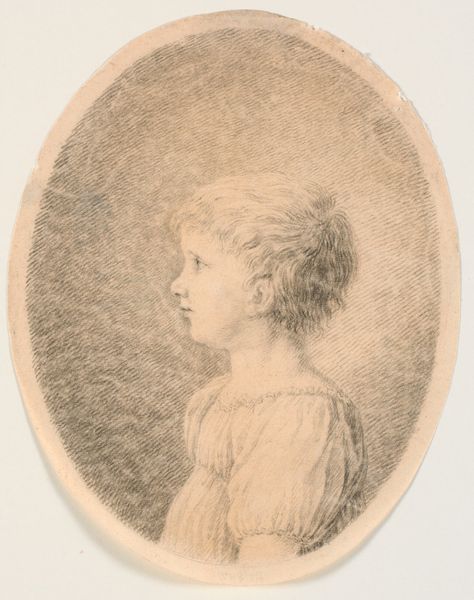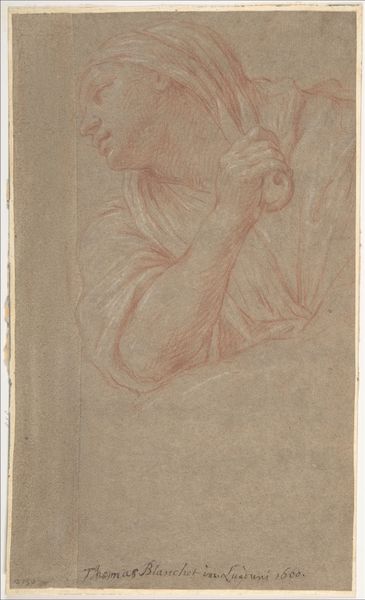
Frederik den sjette som ung kronprins. I profil mod højre 1782
0:00
0:00
drawing, charcoal
#
portrait
#
drawing
#
charcoal drawing
#
charcoal
#
academic-art
Dimensions: 343 mm (height) x 265 mm (width) (bladmaal)
Curator: I'm struck by the overall somber, muted quality. The subtle shading, the almost mournful gaze… It feels like looking at a faded memory. Editor: This is a charcoal drawing from 1782, rendered by the artist Jens Juel. It depicts Frederik the Sixth as a young crown prince. What details stand out for you? Curator: The severe profile view, for one. Profiles are often associated with coins, royalty, official records… there’s an intentional distancing at play. A prince, set apart. Also, the limited use of colour, heightening the formal effect. Editor: The stark simplicity contrasts sharply with the opulent royal portraits we usually see, doesn’t it? The soft, powdery charcoal feels intimate. Almost as if we’ve stumbled upon a private sketch, a moment of unguarded observation. I can't help but feel drawn into his world. The shading around the eyes creates this sense of pensiveness and youthfulness. Curator: Absolutely. The artist brilliantly conveys youthful vulnerability, subtly challenging the stereotypical representation of power. It reflects the changing perception of the monarchy in that era; a shift from unyielding authority towards a more humanized figurehead. The symbol then, changes even while retaining the iconic profile. Editor: And there's the artistic tension too—the raw medium conveying aristocratic restraint. The portrait could also capture Frederik’s inner conflict: balancing personal desires against the backdrop of immense political responsibilities. He looks like someone carrying the weight of the world already on his young shoulders. Curator: Perhaps the oval format mirrors this contained experience. Visually echoing a locket or cameo, this image evokes familial and historical continuity through symbolism. These circular and elliptical forms represented eternity as far back as ancient Egypt. The crown prince is more than an individual. He represents dynastic continuation, cultural memory, national identity. Editor: Right, there is a strong sense of continuation that you get from such art, and the charcoal rendering gives the image an emotional depth to it. Something which helps humanize such a legendary figure. It makes you feel you can see beyond the public role. Curator: Indeed, we are left with a feeling of connection despite all those barriers. The work then speaks volumes of what portraiture can accomplish beyond a mere physical likeness.
Comments
No comments
Be the first to comment and join the conversation on the ultimate creative platform.
